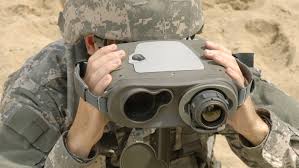By Debbie Gregory.
Four firms have been selected by the Marine Corps to help develop a new handheld targeting system that will provide assistance in firing at the enemy more accurately.
The Marine Corps awarded four “Other Transaction Authorities” or OTAs. OTAs are a procurement tool approved by Congress in 2016 to pay for prototypes and to hire non-traditional defense companies to spur innovation,
The companies are:
• BAE Systems
• Elbit Systems of America
• Fraser Optics
• Northrop Grumman Systems Corporation
These companies will assist in to produce Next Generation Handheld Targeting System or NGHTS is a lightweight, man-portable system that helps Marines to quickly acquire target location data from the battlefield. The goal of the NGHTS is to replace four systems that are currently used. These systems that will be replaced are the Portable Lightweight Designator Rangefinder, Joint Terminal Attack Controller, Laser Target Designator and the Thermal Laser Spot Imager.
NGHTS is important because it is planned to reduce the current weight of the laser designation and laser spot imaging capability by 60 percent, which will increase the mobility and lethality of our fire support-focused Marines,” Maj. Nathan Morales, targeting systems project officer for Program Manager Fires, said in the release. Phase One includes exploring potential system capabilities and providing an in-depth study of the best solution for the best price. Megan Full is the contract specialist supporting PM Fires at MCSC. They plan to collect the findings by the second quarter of 2019 and select at least one vendor to move into Phase Two to develop and demonstrate prototypes.
The areas of focus are:
• System’s overall ergonomics for supporting forward deployed, foot mobile users
• Target recognition, location and designation ranges during day and night operations
• Ability to integrate the system with the Target Handoff System Version 2 to view and manipulate target information
• Technological maturity, manufacturability and value engineering
• Sustainability at the operational user level
The end game is for NGHTS to combine all of the legacy capabilities into one system that is compatible with both current and future fire support systems and will support the Marine Corps for the next 15 to 20 years.









